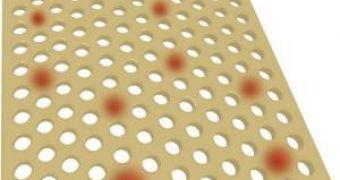Present theories on light explain its nature through the notion of wave-particle duality, that Einstein described in the early 1900s and state that light has both a particle nature and a wave nature.
A new theory predicts that light could be made to exhibit properties similar to those of matter, although photons don't normally interact with one other, unlike for instance electrons used by computer circuitry.
A team of scientists made a breakthrough in the field of "solid light," using only tools that are usually employed to study matter, rather than energy.
Dr Greentree and his colleagues Jared Cole, Professor Lloyd Hollenberg of the University of Melbourne and Dr Charles Tahan of the University of Cambridge have theoretically shown how to make photons change their state.
"Solid light photons repel each other as electrons do. This means we can control photons, opening the door to new kinds of faster computers," says Dr Greentree. "Many real-world problems in quantum physics are too hard to solve with today's computers. Our discovery shows how to replicate these hard problems in a system we can control and measure."
They were able to engineer a "phase transition," that both makes photons shift state and prevent them from interacting with one another, although for the moment, only the simplest phase transitions can be understood.
"A phase transition occurs when something changes its state, for example when water becomes ice," says team member Jared Cole. "Usually, photons flow freely, but in the right circumstances, they repel each other, and form a crystal."
The solid light phase transition that the researchers have theorized brings together two very different areas of physics, optics and condensed matter "to create a whole new way of thinking". "It is very exciting for the University of Melbourne and its international collaborations to be leading the world in this new area," said Dr Greentree.
He also says that it will take some time to develop viable applications that control light in the solid state.

 14 DAY TRIAL //
14 DAY TRIAL //